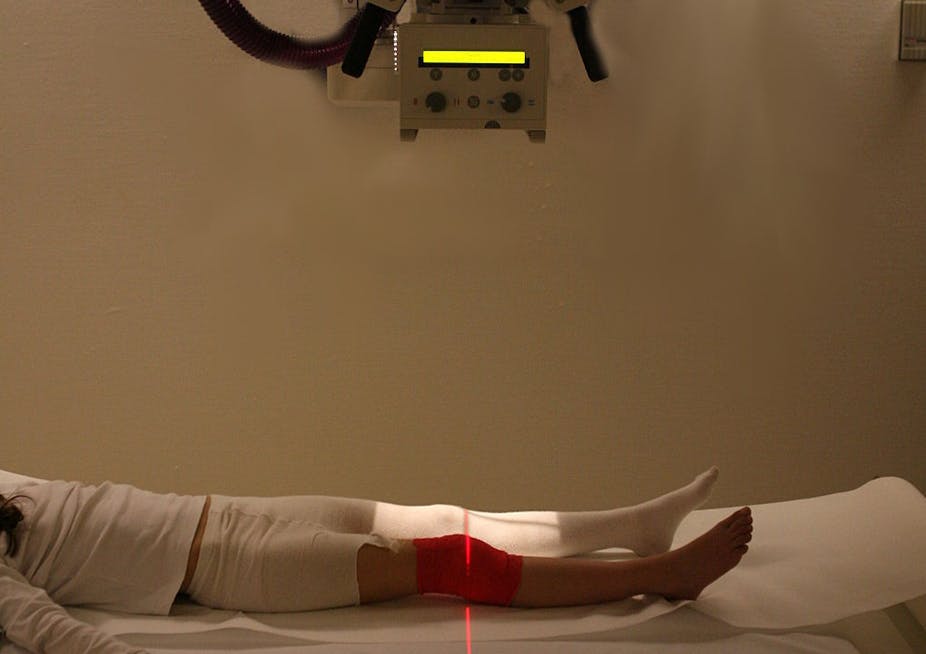Musculoskeletal disorders are the second leading cause of disability worldwide. They affect joints, ligaments, muscles and nerves as well as the structures that support the limbs, neck and back.
The most prevalent of these disorders is osteoarthritis, a progressive disease that causes a depletion of articular cartilage in the joint, and in the lower body it is most frequent in the knee joint. At its end stage, when there’s no more cartilage left in the joint, one bone rubs against the other and as the disease progresses it causes significant pain and disability, as well as reducing quality of life.
Operations to replace the knee joint are usually offered at the end stage. However, a King’s Fund report suggested that the waiting list for this kind of surgery has been creeping up. In the UK, more than 90,000 knee operations were performed in 2012, a 7% increase compared to 2011. Another forecast suggested that this could rise by more than 600% by 2030. In Sweden there was a three-fold increase in the number of operations between 1995 and 2000.
Knee replacements can also wear out and the procedure to re-do them, called a revision, is more complex, expensive and carries a higher risk of infection. According to National Joint Registry data, the number of revisions is also increasing – 17% between 2011 and 2012.
Better diagnostics
Carrying out more operations to keep up pace with increasing demand may be one solution but another important strategy is to improve diagnosis and reduce the rate of revisions. In a new study published in Interface, we identified a technique that could improve the success of knee replacement surgery and prevent unnecessary revisions by using software rather than surgeons to read the X-rays used to measure the progression of the disease.
The region around the knee joint replacement where it meets with the bone shows as a dark space called the radiolucency. Radiolucencies are used by doctors to indicate if a joint replacement has become loose and needs to be revised. We analysed 38 assessments of radiolucency made by six surgeons and compared them to a semi-automated imaging algorithm we had developed.
There was large variation in how the surgeons assessed the X-rays in front of them – less than 10% of the dark areas on the X-ray led to total agreement – but for the automated programme this was 81.6%. If used clinically, this tool would provide a more accurate and reliable means of diagnosing the progression of the disease and limit potentially unnecessary surgical revisions.
Treatment gap
We know there is a poor relationship between disease grade and symptoms. Pain and disability are reported at all stages of the disease, but there is a shortage of effective treatments for early to mid-stage knee osteoarthritis. This leaves many people trapped in the “treatment gap”, suffering pain and disability while waiting for their disease to progress to the end-stage so they can have a joint replacement. In that time they are likely to suffer disability and potential loss of earnings, in addition to the medical costs. For the EU, a conservative estimate of symptomatic knee osteoarthritis was estimated at more than €500 billion a year.
Population studies have shown that the lifetime risk of suffering knee osteoarthritis is as high as 45%; a risk that increases with age, with women being more prone to the disease than men. Prevalence is also increasing, driven by an ageing population and the condition also been linked to increases in obesity levels. It is estimated that 23% of women aged 45 years or older have symptomatic knee osteoarthritis compared with 14% of men in the same age group.
There is evidence that knee surgery is also increasingly being carried out in younger patients – due in part to factors such as obesity. And it has been well established that joint replacement implants have higher revision rates in younger patients. This of course also increases the chances that they will need a second knee replacement in their lifetime.
The current methods of diagnosis are not effective enough at detecting early stage disease or predictive of who will develop symptoms. There is also a pressing need for therapies that are effective in terms of pain relief and restoring function. Importantly, we also need to understand the reasons for revision.

